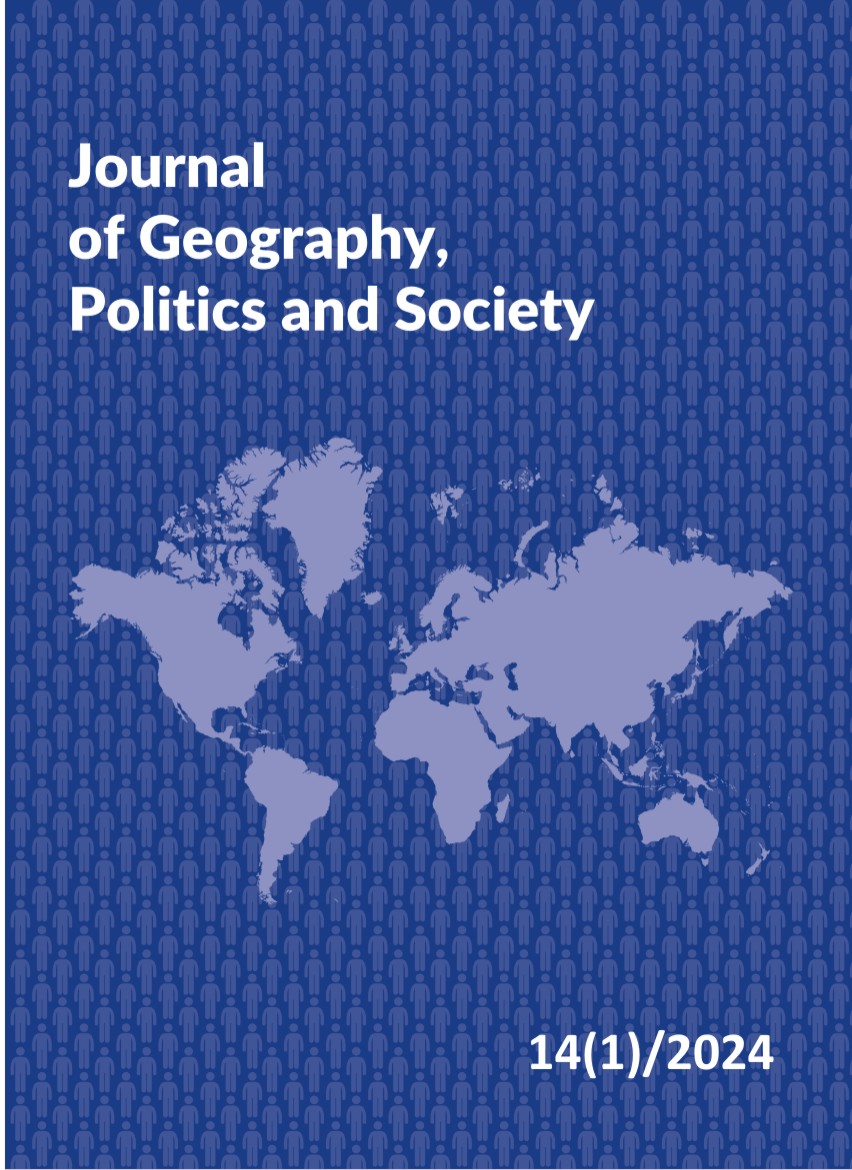Policies for the development of tourism in the most attractive regions of Poland
DOI:
https://doi.org/10.26881/jpgs.2024.1.04Keywords:
tourism development, strategic planning, policies for tourism developmentAbstract
The aim of this study is to determine how local authorities perceive tourism and its role in the economic and social development of the most attractive counties in Poland. In order to achieve this goal, it was necessary to analyse the current strategic documents of selected administrative units, using computer-assisted context analysis and text mining. In total, more than 5500 pages were analysed. Selected chapters of the documents concerning the missions and visions of the counties analysed, their strategic and operational objectives, as well as SWOT analyses were subjected to detailed analysis. The study focused only on those objectives and elements of the SWOT analysis directly related to tourism development in the counties. Furthermore, the analysis allowed to determine the extent to which county development strategies are useful tools in long-term socio-economic development planning in relation to the tourism industry.
Downloads
References
Ashworth G., Page S.J., 2011, Urban tourism research: Recent progress and current paradoxes, Tourism Management, 32(1), 1–15. doi: 10.1016/j.tourman.2010.02.002.
Banaszkiewicz M., Graburn N., Owsianowska S., 2017, Tourism in (Post)socialist Eastern Europe, Journal of Tourism and Cultural Change, 15(2), 109–121. doi: 10.1080/14766825.2016.1260089.
Bank Danych Lokalnych (Eng. Local Data Bank), 2024, GUS, https://bdl.stat.gov.pl/bdl/start (accessed 02 February 2024).
Bosiacki S., 2016, Turystyka aktywna w strategii rozwoju turystyki w województwie wielkopolskim (Eng. Active tourism in the tourism development strategy of the Greater Poland Voivodeship), Ekonomiczne Problemy Turystyki, 1(33), 151–162.
Dogru T., Bulut U., 2018, Is tourism an engine for economic recovery? Theory and empirical evidence, Tourism Management, 67, 425–434.
Giampiccoli A., Mtapuri O., 2014, Moving beyond the 3S’s – Sun, Sea and Sun: An Interpretation of the Tourism Development Strategy Framework for Adu Dabi, U.A.E., Le Geographe du monde arabe, 17(4), 339–356.
Kłodziński M., 2009, Znaczenie i potrzeba tworzenia strategii rozwoju gminy (Eng. The importance and need for creating a municipality development strategy), Zagadnienia Ekonomiki Rolnej, 319(2), 33–47.
Kozak M.W., 2010, Turystyka: niewykorzystana szansa rozwoju regionów? (Eng. Tourism: An Untapped Opportunity for Regional Development?), Studia Regionalne i Lokalne, 4 (42), 43-59.
Matusiak K., 2011, Innowacje i transfer technologii. Słownik pojęć (Eng. Innovations and Technology Transfer: A Glossary of Terms), Polska Agencja Rozwoju Przedsiębiorczości, Warszawa.
Muler-Gonzalez V., Coromina L., Galí N., 2018, Overtourism: Residents’ perceptions of tourism impact as an indicator of resident social carrying capacity – Case study of a Spanish heritage town, Tourism Review, 73(3), 277–296. doi: 10.1108/TR-08-2017-0138.
Nawrocka E., 2013, Istota turystyki biznesowej, stan i czynniki jej rozwoju na przykładzie Wrocławia (Eng. The Essence of Business Tourism, Its Current State, and Development Factors Based on the Example of Wrocław), Rozprawy Naukowe Akademii Wychowania Fizycznego we Wrocławiu, 41, 76–85.
Novy J., 2011, Marketing marginalized neighborhoods. Tourism and leisure in the 21st century inner city, Columbia University, Columbia.
Novy J., Colomb C., 2019, Urban Tourism as a Source of Contention and Social Mobilisations: A Critical Review, Tourism Planning & Development, 16(4), 358–375. doi: 10.1080/21568316.2019.1577293.
Rotariu I., 2006, The new Tourism Communication: from 3S to 3E with case study of Romania, University Library of Munich, Germany, MRPA Paper.
Seraphin H., Sheeran P., Pilato M., 2018. Over-tourism and the fall of Venice as a destination, Journal of Destination Marketing & Management, 9, 374–376. doi: 10.1016/j. jdmm.2018.01.011.
Stec A., 2015, Wieloaspektowe podejście do definicji produktu turystycznego (Eng. A Multifaceted Approach to the Definition of a Tourism Product), Modern Management Review, 22(3), 233–248.
Szwacka-Mokrzycka J., 2012, Znaczenie turystyki w strategii rozwoju gminy (Eng. The Importance of Tourism in the Municipality Development Strategy), Studia Ekonomiczne i Regionalne, 5(1), 28–33.
Szyman J., 2023, Dynamiczny wzrost turystyki medycznej w Polsce i na świecie (Eng. The Dynamic Growth of Medical Tourism in Poland and Worldwide), https://pl.linkedin. com/pulse/dynamiczny-wzrost-turystyki-medycznej-wpolsce-i-na-%C5%9Bwiecie-szyman (accessed 13 February 2024).
Ustawa z dnia 6 grudnia 2006 r. o zasadach prowadzenia polityki rozwoju (Eng. The Act of December 6, 2006, on the Principles of Development Policy Conduct), 2006, (Dz. U. 2006 Nr 227 poz. 1658).
Walory turystyczne w powiatach i ich otoczeniu (Eng. The tourist attractions in the counties and their surroundings), 2023. GUS, Warszawa. World Travel & Tourism Council, 2023, Economic Impact, https://wttc.org/research/economic-impact (accessed 15 February 2024).
Yazdi S.K., Khanalizadeh B., 2017, Tourism demand: a panel data approach, Current Issues in Tourism, 20(8), 787–800. doi:10.1080/13683500.2016.1170772.
Zeszyt metodologiczny. Walory turystyczne w powiatach i ich otoczeniu (Eng. The methodological notebook. Tourist attractions in the counties and their surroundings), 2023, GUS, Warszawa.
Zmyślony P., Kowalczyk-Anioł J., 2019, Urban tourism hypertrophy: who should deal with it? The case of Krakow (Poland), International Journal of Tourism Cities, 5, 247– 269. doi: 10.1108/IJTC-07-2018-0051.

 Academic Scientific Journals
Academic Scientific Journals




